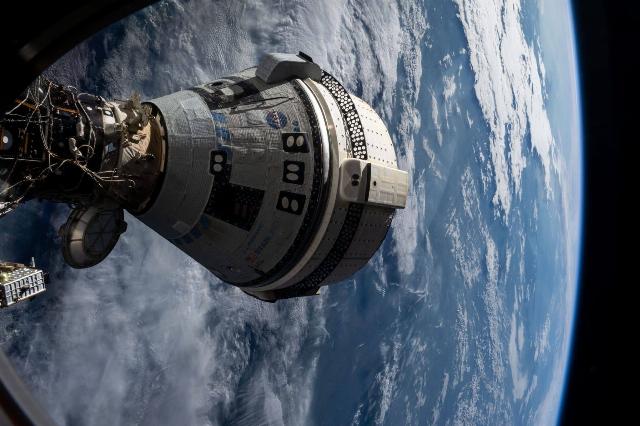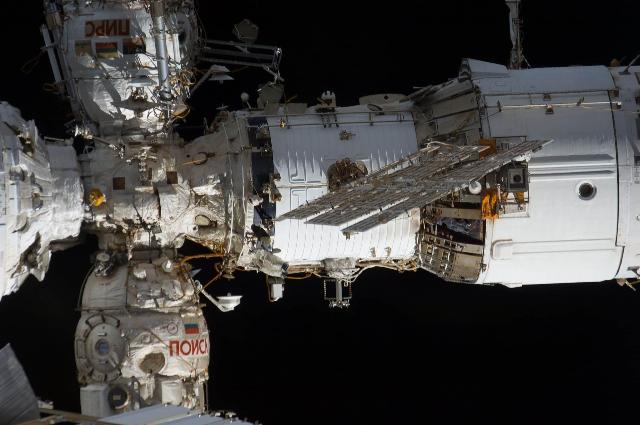The International Space Station, even in fully operational condition, is constantly losing air. Normally, the leakage value should not exceed 270 grams per day. But in April 2024, the station lost 1.6 kilograms of its atmosphere every day — almost six times more than allowed. According to NASA's internal estimates, the situation has reached a critical level. At the same time, in the public space, the agency adheres to optimistic rhetoric and tries to present the colossal leak as something only moderately disturbing.
A major leak on the ISS first became known in September 2019, when the orbiting laboratory began to lose about half a kilo of air per day. The situation progressed, and by January 2020, the daily loss of atmosphere reached 1.3 kilograms. At the same time, the joint efforts of Roscosmos and NASA managed to stop the leak. The efforts were so successful that the ISS began to lose three times less air than was considered normal.
But the victory turned out to be temporary: the leak "returned" in 2024. By February, the ISS was already losing a kilogram of atmosphere daily, and by April it had broken its previous anti—record of 1,600 grams of air per day. The difficulties with the leak do not end there. There are two problems: the place on the station from where the vital resource for the crew disappears, and possible solutions, or rather their consequences for the further operation of the ISS.
The fact is that the air leaves the transition chamber in the Zvezda module of the Russian segment of the ISS. In fact, this is an empty tunnel connecting the working compartment (the main space for the crew's life in the module) with a docking station. There are hatches at both ends of the transition chamber — the inner one isolates it from the working compartment, the outer one is used to access the docked Progress or Soyuz spacecraft. In almost five years of searching, the specific location of the leak could not be found. When the hatch between the transition chamber and the working compartment is closed, the ISS stops losing air, it leaves only from the tunnel.
The entire interior of the tunnel was thoroughly studied, and any suspicious places were covered with sealant. Two cracks were found, but their processing did not give any result: the leak continued in the same volume. The only explanation that NASA and Roscosmos experts came to by consensus is that the air escapes through fatigue microcracks in the external and internal welds of the sealed housing of the transition chamber. Theoretically, leakage can be further reduced if the external seams are also treated. But this will not work, since the transition chamber is surrounded by an unpressurized assembly compartment (where the module's engines are located).
There is only one solution left: close the hatch to the transition chamber from the side of the work compartment and never open it again. But then the ISS will lose the docking node, which is used to provide the Russian segment with food. In addition, the Progress docked to it performs correction of the station's orbit. Theoretically, it is possible to use other nodes in the Russian segment to unload the ship with provisions. And before correcting the orbit, "re-park" it on the "Star". But this is an additional operation, which always presents a risk.

The Boeing CST-100 Starliner docked to the ISS
Image source: NASA
Finally, there is a bureaucratic and political problem with leakage. As it became known from the latest report of the Office of the Inspector General (OIG, internal audit of the agency) The National Aeronautics and Space Administration of the United States, the current rate of atmospheric loss by the station represents the maximum level of risk. But only for the American side and according to the risk assessment methodology adopted by NASA. For the Russian side, this level of air leakage is not as critical.
That is, NASA engineers and managers believe that the hatch to the transition chamber should be closed and never opened again. While their colleagues at Roscosmos are confident that with a sharp increase in the rate of leakage, the crew will always have time to close the hatch if it was opened for any reason.
After the publication of the OIG report with details on the extremely high internal assessment of the risks associated with the leak to the ISS, journalists had logical questions for NASA representatives. Responding to them during a press conference dedicated to the launch of the Crew-9 mission, agency staff assured the press: There is almost no reason to worry.
In a nutshell, NASA's position is as follows: there is a problem, it is serious, but it can be solved, and measures to reduce leakage are constantly being taken. Moreover, they are, of course, joint with Roscosmos, and the Russian side is cooperating in every possible way with international partners to solve this problem.
Note that the above-mentioned OIG report is not only about the leak in the Zvezda module. Its main topic is NASA's capabilities to operate the ISS until the end of the 2020s or even in the 2030s. Such an extension may be necessary if the replacement of the International Space Station is delayed for some reason.
Among the reasons for concern, in addition to the notorious leak, the auditors highlight:
- the critical dependence of the agency (and the United States as a whole) on the only national provider of manned missions (SpaceX, obviously);
- possible budget cuts;
- obsolescence of equipment and consumables, suppliers of which are leaving the market;
- space debris and micrometeoroids.

